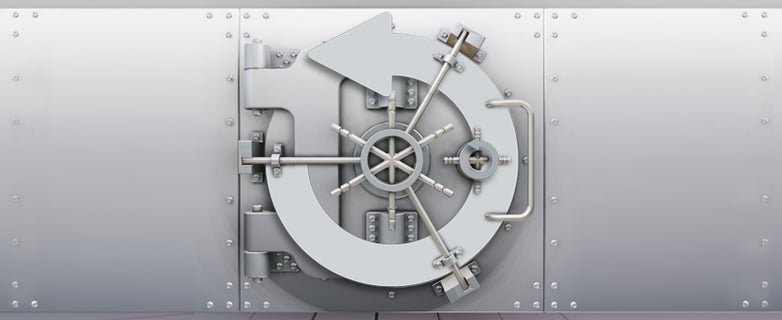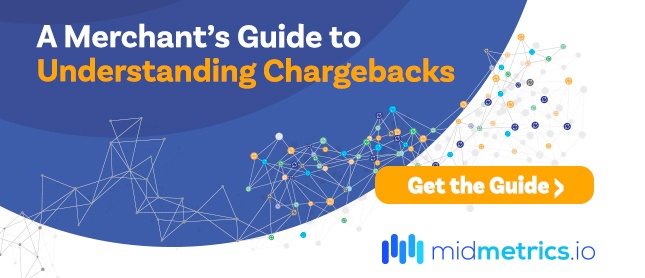
Bank Chargebacks: What They Are & How You Can Prevent Them
By Chris Alarie on May 20, 2021
Among the many complications facing merchants as they attempt to manage chargebacks is the high degree of variance in the chargeback process. Chargebacks result from a wide variety of sources (legitimate or otherwise), are processed according to the particular policies of the card brands and banks and are governed by multiple laws and regulations.
Chargebacks can even vary in terms of which party initiates them. While most chargebacks originate with the consumer filing a dispute with the issuing bank, some are actually initiated by the bank itself. These are known as bank chargebacks.
What is a Bank Chargeback?
A bank chargeback is a specific kind of chargeback, but in its most basic aspects it is the same as a normal chargeback: it is a means of returning payment from merchant to cardholder. A bank chargeback differs from a normal chargeback in that it is initiated by the issuing bank rather than the cardholder. In fact, the cardholder may be unaware of the bank chargeback entirely until the payment has been returned to their account.
Issuers file bank chargebacks if they detect that there is some issue with the transaction. Those issues can include:
-
There was no authorization provided or the authorization was invalidated
-
The transaction was issued despite the authorization request being declined
-
The requested information (including address, CCV code, or expiration date) is missing or illegible
-
The transaction was processed despite the payment card being expired
-
The wrong currency or transaction code was used
-
The presentment was late, surpassing some time limit (usually 30 days) resulting in the account number being invalidated or blocked
-
The account number doesn’t match what the issuer has on file for the account
-
The transaction was processed multiple times
-
Some key information such as the account number or transaction amount was entered incorrectly, usually resulting from a merchant mistake while manually entering the transaction information
-
The issuer suspects some form of merchant fraud
The card brands have reason codes associated with the sorts of problems that often result in bank chargebacks. Some of them (such as the ones associated with a late presentment) are used almost exclusively for bank chargebacks.
How are Bank Chargebacks Different than Regular Chargebacks?
A normal chargeback can arise from a number of different causes, including cardholder fraud—friendly or otherwise. But an issuer generally isn’t going to file a bank chargeback unless it detects some sort of merchant error. That is to say, a bank chargeback is almost by definition always going to be a legitimate chargeback resulting from some sort of mistake made by the merchant.
On the one hand, it is almost never worthwhile to fight a bank chargeback. As a result, the merchant will almost certainly lose the revenue from the transaction, as well as paying chargeback fees and having their chargeback ratio increase. Also, depending on the specifics of the transaction and bank chargeback, there may be cardholder dissatisfaction to manage. Perhaps the cardholder would have preferred to receive the merchandise rather than a refund.
How Do I Prevent Bank Chargebacks?
On the other hand, since bank chargebacks are nearly futile to dispute, merchants need to emphasize chargeback prevention. Thankfully, chargebacks caused by merchant error should presumably be easier to prevent in the future than chargebacks caused by cardholder behaviors. If there is some issue with the merchants’ procedures that is leading to bank chargebacks, the merchant can make the appropriate changes to prevent those errors from recurring.
Bank chargebacks occur for specific reasons that are usually explained by clear reason codes, unlike the occasionally haphazard use of reason codes for cardholder-initiated chargebacks. The necessary information is available to the merchant. However, knowing how to track and implement this information requires the merchant to have a solid understanding of their payments ecosystem.
MidMetrics’ comprehensive suite of chargeback management solutions gives a merchant all of the information they need to recognize the source of their bank chargebacks—as well as any other forms of chargebacks. It does so as a part of a full suite of proprietary chargeback management tools (including Management Dashboards, In-Depth Analytics Tools, and On-Demand Reports).
By looking at where bank chargebacks fit into the business at a macro and micro level, merchants can identify which aspects of their procedures need to be modified in order to prevent further bank chargebacks in the future.
Want to see MidMetrics in action? Book a demo with one of our chargeback specialists today.
For merchants, understanding chargebacks is essential to in order to fight them correctly and protect merchant accounts and revenue. We cover all this and more in our guide, A Merchant's Guide to Understanding Chargebacks.



